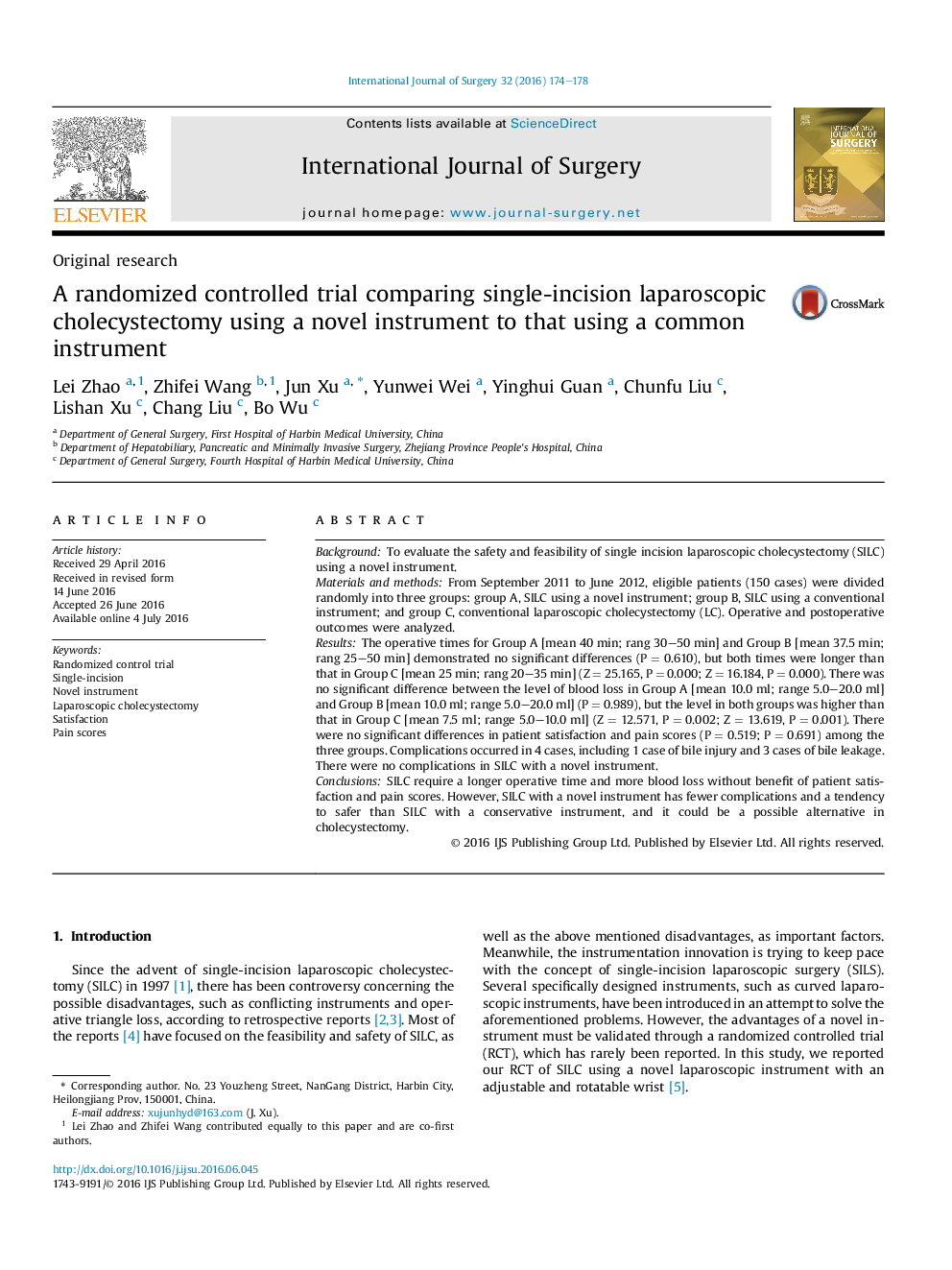| Article ID | Journal | Published Year | Pages | File Type |
|---|---|---|---|---|
| 6250877 | International Journal of Surgery | 2016 | 5 Pages |
BackgroundTo evaluate the safety and feasibility of single incision laparoscopic cholecystectomy (SILC) using a novel instrument.Materials and methodsFrom September 2011 to June 2012, eligible patients (150 cases) were divided randomly into three groups: group A, SILC using a novel instrument; group B, SILC using a conventional instrument; and group C, conventional laparoscopic cholecystectomy (LC). Operative and postoperative outcomes were analyzed.ResultsThe operative times for Group A [mean 40Â min; rang 30-50Â min] and Group B [mean 37.5Â min; rang 25-50Â min] demonstrated no significant differences (PÂ =Â 0.610), but both times were longer than that in Group C [mean 25Â min; rang 20-35Â min] (ZÂ =Â 25.165, PÂ =Â 0.000; ZÂ =Â 16.184, PÂ =Â 0.000). There was no significant difference between the level of blood loss in Group A [mean 10.0Â ml; range 5.0-20.0Â ml] and Group B [mean 10.0Â ml; range 5.0-20.0Â ml] (PÂ =Â 0.989), but the level in both groups was higher than that in Group C [mean 7.5Â ml; range 5.0-10.0Â ml] (ZÂ =Â 12.571, PÂ =Â 0.002; ZÂ =Â 13.619, PÂ =Â 0.001). There were no significant differences in patient satisfaction and pain scores (PÂ =Â 0.519; PÂ =Â 0.691) among the three groups. Complications occurred in 4 cases, including 1 case of bile injury and 3 cases of bile leakage. There were no complications in SILC with a novel instrument.ConclusionsSILC require a longer operative time and more blood loss without benefit of patient satisfaction and pain scores. However, SILC with a novel instrument has fewer complications and a tendency to safer than SILC with a conservative instrument, and it could be a possible alternative in cholecystectomy.
